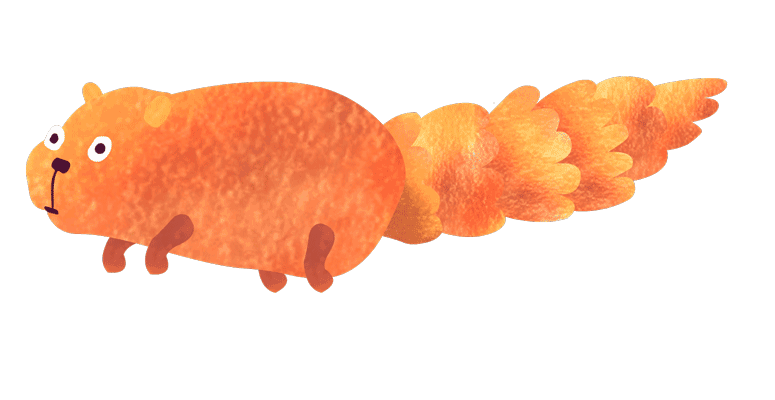Los científicos que estudian el dolor están empezando a pensar de manera diferente sobre el dolor y sus causas.
Y están haciendo descubrimientos emocionantes…
Mire el video para conocer nuevos enfoques para reducir su dolor.
Leer la transcripción >
Érase una vez cuando todas las tierras estuvieron plagadas de un persistente dolor. Tan extendida estaba esta aflicción que una de cada cuatro personas la tenía. El dolor duraba más de tres meses. Ensombrecía sus vidas cotidianas, les limitaba las actividades cotidianas, y todo lo que intentaron resultó inútil.
¡Oye dolor! ¡Vete ya! Todo hemos intentado, ¡pero tú no te vas! Movernos menos, tomar pastillas; cortes y agujas y el dolor no se va; no aguantamos más. ¡Basta!
Pero el dolor sigue, como leal compañero. La esperanza de la gente se esfumó y se resignaron a vivir con ese dolor. ¡Solo que ahora el dolor era un monstruo!
Entonces llegó un grupo de investigadores, entre los que me incluyo. ¡Aléjate, grandulón! Soy el profesor Lorimer Moseley, soy científico del dolor. Los científicos del dolor han tenido que cambiar totalmente su forma de entender cómo funciona el dolor. La evidencia muestra que incluso si piensa en el dolor, puede cambiar su forma de sentirlo.
Durante los próximos minutos, descubriremos cómo domar la bestia del dolor.
Todo el dolor es producido por el cerebro, ya sea un dolor punzante en la piel o un dolor profundo en las articulaciones. Es una respuesta de protección, una alarma de seguridad del cuerpo.
Cuando se detecta una amenaza, el sistema nervioso envía señales al cerebro, que luego evalúa la situación y decide si debe generar dolor para protegernos.
El problema es que a veces el sistema se vuelve demasiado sensible. Después de una lesión, el sistema nervioso puede quedar atrapado en un estado de alerta permanente. Esto significa que incluso señales inofensivas pueden activar el dolor.
Es como si la alarma de incendios de la casa se disparara cada vez que enciendes una vela.
Pero hay buenas noticias: Podemos reentrenar nuestro sistema nervioso para reducir la sensibilidad al dolor.
Y esto es lo que la ciencia ha demostrado: El movimiento gradual y controlado puede ayudar a recalibrar el sistema. Comprender cómo funciona el dolor y cambiar nuestra percepción sobre él también puede reducir su impacto.
Es un proceso, pero muchas personas han logrado domar la bestia del dolor.
Así que recuerda: El dolor es real, pero también es modificable. Con la información y estrategias adecuadas, podemos recuperar el control.
La forma en que piensas sobre tu dolor puede cambiar la forma en que lo sientes.
La forma en que piensas sobre tu dolor puede cambiar la forma en que lo sientes.
Es hora de reentrenar tu sistema de dolor
Esto puede implicar que te pongas a prueba físicamente, que te muevas más de lo que normalmente harías, que seas honesto acerca de tu actitud y creencias actuales, y que le hagas nuevas preguntas a tu profesional de la salud. Empieza y pide una cita con tu profesional de la salud.
Si buscas asesoramiento específico, ¡Untanglr ofrece un curso en línea que desarrollará las habilidades que necesitas para recuperarte!
¿Cómo sé si mi sistema de dolor está sobreprotector?
Si ha tenido dolor durante más de unos meses, su sistema de control del dolor será más eficiente a la hora de producirlo. Esto es lo que sucede con el tiempo: su sistema se vuelve más sensible y aprende a reconocer el dolor.
¿Cómo puedo reentrenar mi sistema de dolor para que sea menos protector?
En realidad, existen muchas maneras de reentrenar su sistema de dolor, y todas ellas comienzan con la comprensión del dolor.
¿Cómo sé si es seguro mudarme?
El movimiento es la vía más importante para la recuperación y casi siempre es seguro moverse. El dolor es una señal de advertencia, por lo que siempre debe consultar a un profesional de la salud para que lo revise primero.
Acerca de Tame the Beast
Whatever it is, the way you tell your story online can make all the difference.
¿Por qué domar a la bestia?
Nos entusiasma aprender y vivir al máximo la vida. Compartir nuestro conocimiento y experiencia de campo con el objetivo de ayudar a las personas a acercarse a la reducción y el control del dolor.
Acerca de nuestros educadores
Lorimer Moseley
El profesor Lorimer Moseley es un científico clínico que investiga el dolor en humanos. Después de ocupar puestos en la Universidad de Oxford (Reino Unido) y la Universidad de Sídney, Lorimer fue nombrado profesor de neurociencia clínica y catedrático de fisioterapia en la Universidad de Australia del Sur. También es investigador principal sénior en NeuRA e investigador principal del NHMRC.
Dave Moen
Dave Moen es el fundador de Untanglr y Permission to Move . Su equipo desarrolla herramientas de tratamiento en línea para pacientes y ofrece tratamiento del dolor crónico mediante consultas por video a personas de todo el mundo. Permission to Move ha publicado un libro que describe su modelo de práctica clínica y ofrece un programa para médicos para aquellos interesados en brindar el mejor tratamiento del dolor.
El Programa de Permiso para Trasladar al Clínico incluye acceso a planes de tratamiento de múltiples sesiones, recursos de desarrollo profesional y plantillas de notas clínicas y viene listo para instalar en la práctica.
Mantente informado









